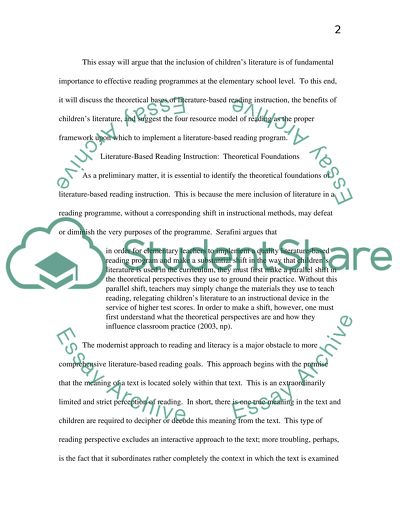Cite this document
(“The Case for Literature-Based Reading Programmes at the Elementary Essay”, n.d.)
The Case for Literature-Based Reading Programmes at the Elementary Essay. Retrieved from https://studentshare.org/miscellaneous/1513364-the-case-for-literature-based-reading-programmes-at-the-elementary-school-level
The Case for Literature-Based Reading Programmes at the Elementary Essay. Retrieved from https://studentshare.org/miscellaneous/1513364-the-case-for-literature-based-reading-programmes-at-the-elementary-school-level
(The Case for Literature-Based Reading Programmes at the Elementary Essay)
The Case for Literature-Based Reading Programmes at the Elementary Essay. https://studentshare.org/miscellaneous/1513364-the-case-for-literature-based-reading-programmes-at-the-elementary-school-level.
The Case for Literature-Based Reading Programmes at the Elementary Essay. https://studentshare.org/miscellaneous/1513364-the-case-for-literature-based-reading-programmes-at-the-elementary-school-level.
“The Case for Literature-Based Reading Programmes at the Elementary Essay”, n.d. https://studentshare.org/miscellaneous/1513364-the-case-for-literature-based-reading-programmes-at-the-elementary-school-level.


